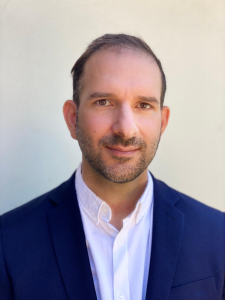London & South East Evening Meeting – Electric Cables
10 July, 2025
Thursday 10 July | 18:00 – 19:30 hrs
The Warehouse, 13 Theed Street, London, SE1 8ST
Registration – £10 SUT members / £20 non-members (+ VAT)
Subsea cables play a vital role in the energy transition by facilitating the transmission of electricity, especially from offshore renewable energy sources like wind farms. They enable the efficient transfer of power over long distances, making it possible to harness renewable energy from remote locations and integrate it into the national grid. This is crucial for reducing reliance on fossil fuels and meeting energy demands, while also supporting the development of a more sustainable and resilient energy system.
The presentation explores the evolving technologies to meet the performance and reliability demands for these cables and what more we can do to keep them safe!
Protection of Subsea Cables from External Threats – including Sabotage!
Subsea cables face significant external threats that jeopardize continuous power transmission, national security, financial stability, and global connectivity. These cables are particularly vulnerable to sabotage by both state and non-state actors amid geopolitical tensions, which can severely disrupt data flow and surveillance capabilities. To mitigate these risks, it is crucial to implement robust protection strategies, such as real-time monitoring, strengthened physical security, and enhanced international cooperation on cable route management.
Matthew Laing has over fourteen years’ experience as a civil and geotechnical engineer, working first within the onshore and offshore sector assessing the asset integrity of oil and gas pipelines, and since 2018 within the offshore wind and HVDC interconnector industries, specialising in subsea cable engineering from desk top study through routing, landfall studies, CBRA, burial assessment, cable protection analysis and into operations with cable integrity risk assessments. Matthew has worked on the export and inter-array cables on many of the UK, European and worldwide wind farm developments, at stages from concept, through FEED, to installation on subsea cables, dealing with a multitude of hazards to subsea cables.
Future subsea cable technologies and challenges on the horizon, with an emphasis on high voltage cables
As the energy transition accelerates, high voltage subsea power cables are playing an increasingly essential role in offshore wind, interconnectors and other infrastructure. This presentation will explore how the technology is evolving to meet growing demands for performance and reliability while also considering the challenges posed by deeper waters, harsher environments, dynamic applications and longer transmission distances. The talk will also consider how the industry is adapting to greater complexity and scale.
Darren Patel is a professional engineer with over 25 years of experience in power system technology specialising in cable systems. He has led and contributed to a wide range of cable-related research, development and forensic investigations with a strong emphasis on risk mitigation. Much of his work is commissioned by loss adjusters acting on behalf of insurers and reinsurers, particularly in the context of offshore and subsea cable failures. Darren is also an active member of industry working groups, contributing to the development and refinement of technical standards based on extensive practical experience.
SUT Event Policy
Tickets are non-refundable and non-transferable, although discretion may apply in exceptional circumstances. The SUT reserves the right to make changes to the event schedule, lineup, or venue. Attendees assume all risks associated with the event. By entering, you consent to photography and video recording for promotional purposes. Terms and conditions apply.
Contact [email protected] for enquiries.


